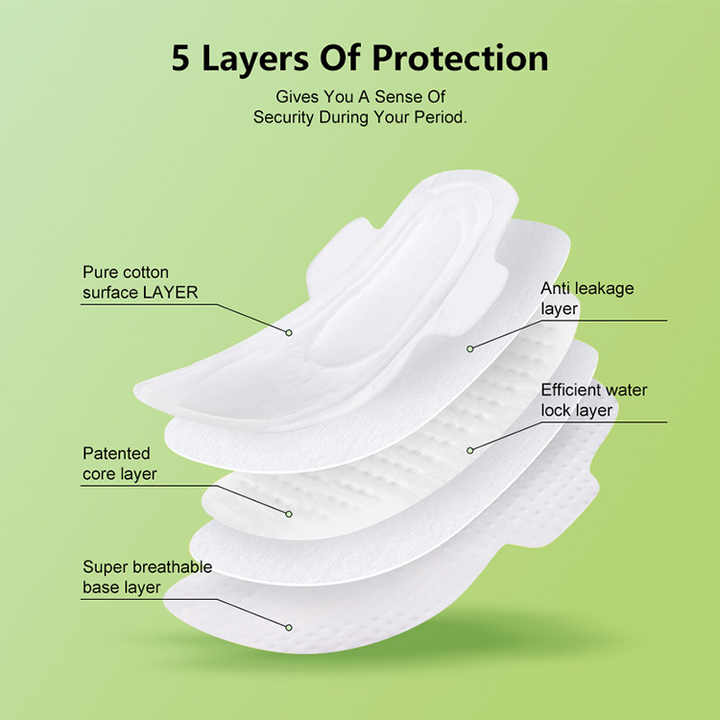Global standards for menstrual products and why they matter
2024-12-30
Global standards for menstrual products and why they matter

Please briefly explain what global product standards are and why they are important?
The International Organization for Standardization (ISO) describes standards as “a formula that describes the best way to do something. It can be about making a product, managing a process, providing a service or supplying materials…”
Developed through an in-depth consultative and expert-led process, standards play an important role in trade because manufacturers need them to make quality, safe and reliable products: governments use them as requirements when importing products; retailers often ask them to do so before putting products on their shelves, and consumers look for them, especially when it comes to health and hygiene products. This is where global standards for menstrual products come in.
Despite the fact that around 1.8 billion people around the world menstruate every month, there are currently no unified global standards for menstrual products. This means that the quality and type of menstrual products you can buy vary from country to country. This is a huge gap and market barrier that ISO, through its Technical Committee (TC) 338, aims to address. The committee is developing standards for menstrual products in four categories: disposable sanitary pads and tampons, reusable cloth products (napkins or underwear), and menstrual cups – and is expected to be completed by December 2026. The committee is led by the Swedish Standards Institute (SIS) and involves more than 45 countries.
Interesting. Can you share how this seemingly highly technical and far removed process impacts the millions of people around the world who menstruate?
While the process of global standard setting may seem far-fetched, its impact is happening every day. When you walk into a store to buy menstrual products, standards determine which products you’ll find on the shelf, and they guarantee that the products you buy will work as you intend – collect or absorb menstrual flow without leaking – and that they are safe for short- and long-term use. In many low- and middle-income countries (LMICs), the lack of standards has prevented a range of innovative menstrual products from reaching consumers seeking high-quality and more affordable options for menstrual management. Introducing standards will remove regulatory barriers, paving the way for these innovations to reach the users who need them most.
Does this mean that the menstrual products we have on the market so far are unsafe or not fit for purpose?
No. For commercial products that are readily available in both high-income and low-income countries, many countries have standards in place, but there is room for improvement, and this is the framework that global standards will bring. From standardizing the materials used based on short-term and long-term health effects, to the size and shape of the products, and what is now available through trade, global standards will help streamline the menstrual products available to women and girls both domestically and across borders, with a focus on safety, effectiveness and quality.
Can you walk us through the expected process and timeline for global standards on menstrual products, and when they might come into effect in the country?
As mentioned earlier, ISO technical committees have been tasked with developing these standards. Different working groups and sub-working groups have already started working on the different components that make up the standards, from terminology to materials, sizes, etc. Other ISO technical committees with relevant technical expertise, such as textiles, are also part of the process. The committee meets regularly, including annual face-to-face meetings, such as the one taking place this week in Copenhagen. All these efforts are expected to culminate with the publication of a global standard in December 2026. But this is just the beginning, as countries need to adopt these standards nationally for them to become binding and become the framework for local regulators to enforce regulations and compliance for retail, import, trade, etc.
That’s why it’s important to involve as many countries as possible in the process from the beginning. However, currently only a handful of low- and middle-income countries are represented. This is despite the fact that these countries currently have over 600 million women and girls who rely on non-dedicated menstrual products to manage their periods.
How do we ensure that global standards don’t limit innovation and supply of local products?
In fact, there are many great initiatives around the world where people see the need to address gaps and inequalities in access to menstrual products and propose solutions to achieve this. Product quality standards focus on outcomes and the minimum quality and safety requirements to achieve those outcomes. For menstrual products: Does the product collect or absorb enough menstrual flow? Is its shape and size adequate to meet the needs of different women and girls? Is the product safe in the short term (no rashes or irritation) and does its use lead to long-term health effects? They do not prescribe materials or requirements, leaving plenty of room for innovators while defining a minimum threshold that each product should meet. Once standards exist, market and trade barriers can be addressed.
Therefore, in the long run, the standard will reward local producers who invest a lot of time and effort in creating quality products, which will help them put their products on the shelves in the countries where users need them most.
Nafi has a clear goal: We want to ensure that every woman and every girl has the opportunity to buy the menstrual products she wants and can afford, close to where she lives. Increasing access to quality, affordable menstrual products in low-income and high-income countries and helping to unlock the huge potential of women and girls around the world.




